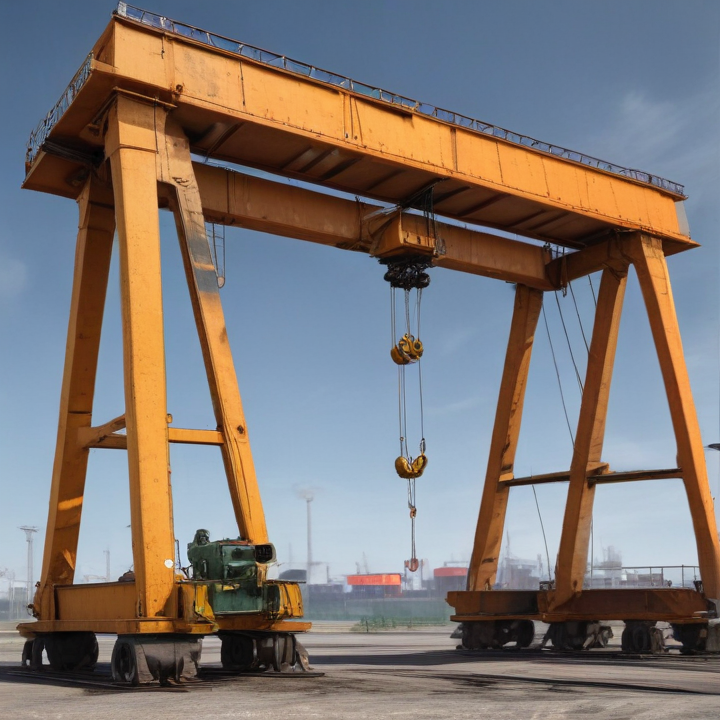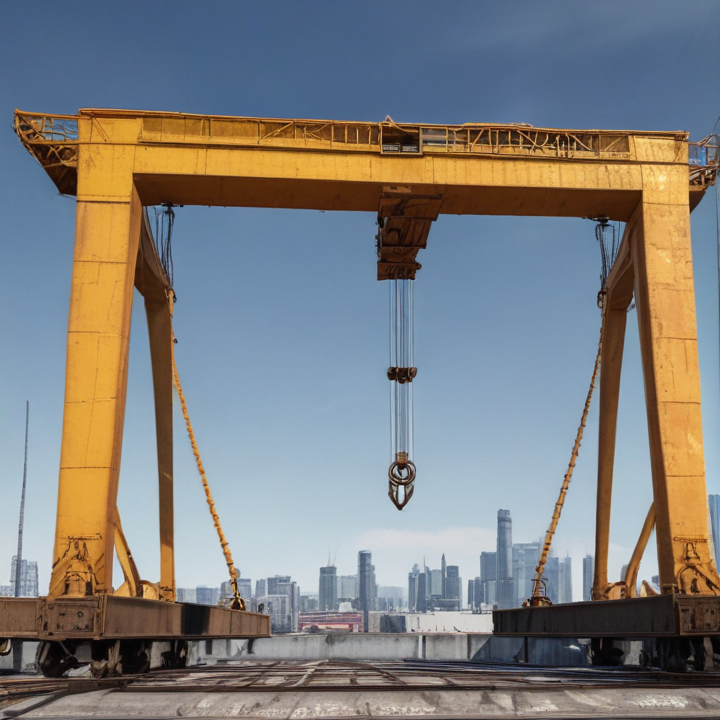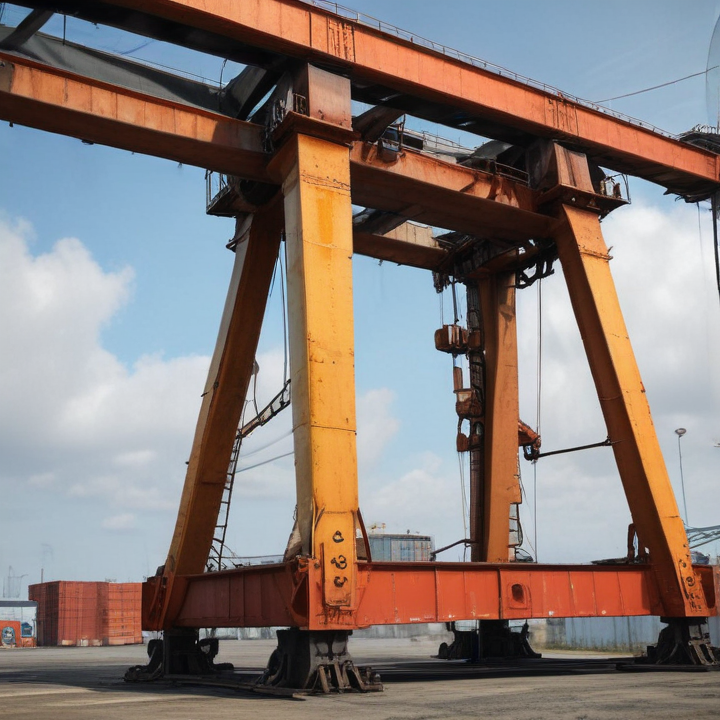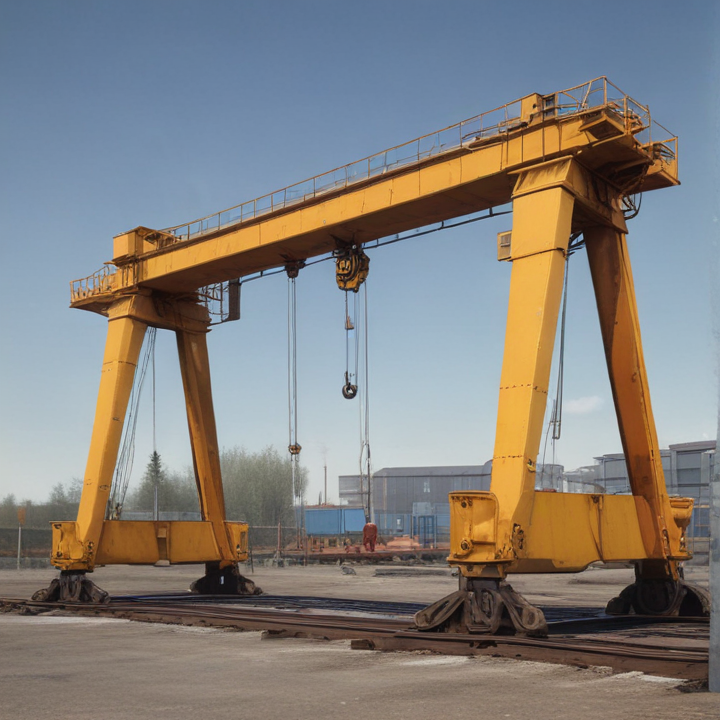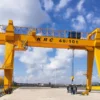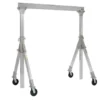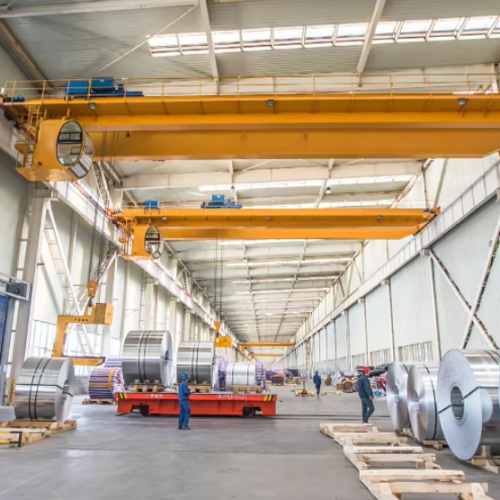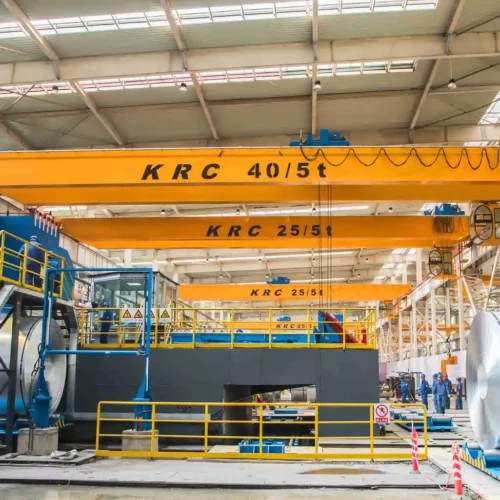used gantry crane Safety Certifications
Safety certifications for used gantry cranes are crucial to ensure safe operations and regulatory compliance. The key certifications include:
1. OSHA Compliance (Occupational Safety and Health Administration, U.S.):
– OSHA 1910.179: This standard covers overhead and gantry cranes, specifying requirements for construction, installation, inspection, and maintenance.
2. ASME Standards (American Society of Mechanical Engineers):
– ASME B30.2: This standard provides guidelines for the safe installation, inspection, and operation of overhead and gantry cranes.
– ASME B30.17: Offers additional safety guidelines for overhead and gantry cranes with underhung trolleys and underhung cranes.
3. CMAA (Crane Manufacturers Association of America) Specifications:
– CMAA Specification No. 70: Outlines standards for the construction and operation of top-running overhead and gantry cranes.
– CMAA Specification No. 74: Applies to top-running and under-running single girder cranes.
4. ISO (International Organization for Standardization) Standards:
– ISO 9927-1: Provides comprehensive guidelines for the inspection of cranes, including gantry cranes, to ensure ongoing safety.
5. EN Standards (European Norms):
– EN 15011: Details safety requirements for overhead traveling cranes including those with a gantry.
6. Lifting Equipment Engineers Association (LEEA) Certification:
– LEEA certifications are recognized globally and validate that cranes meet stringent safety standards.
7. Periodic Inspection and Testing:
– Regular inspections and testing, often mandated by local safety regulations (e.g., LOLER in the UK), are necessary to maintain certification validity and ensure operational safety.
For a complete assurance, acquiring a used gantry crane with comprehensive historical documentation of inspections, maintenance records, and certifications from accredited bodies is advisable. Engaging certified professionals for inspection and recertification before deployment adds an extra layer of safety and reliability.
List Reference Technical Parameters of “used gantry crane”
When evaluating a used gantry crane, it is crucial to consider several technical parameters to ensure it meets your operational requirements and safety standards. Here we list essential reference technical parameters:
1. Load Capacity: The maximum weight the gantry crane can lift, typically measured in tons. Ensure the used crane’s load capacity aligns with your needs.
2. Span Length: The distance between the crane’s legs (also known as the span). This affects the workspace required and coverage area.
3. Height Under Gantry: The height from the ground to the underside of the crane’s horizontal beam. This determines the vertical clearance available for lifting operations.
4. Lifting Height: The maximum vertical distance the hook can travel from the ground up. Important for operations requiring significant lifting heights.
5. Crane Speed: The rate at which the crane’s hoist, trolley, and bridge travel. Divided into:
– Hoisting speed
– Trolley speed
– Bridge travel speed
6. Duty Cycle/Class: Indicates the crane’s capability to handle different levels of usage, based on standards like FEM/ISO. Common classes range from light-duty to heavy-duty operations.
7. Power Supply: Typically involves the voltage, phase, and frequency required. Common specifications are 3-phase, 230/460V, and 50/60Hz.
8. Control System: Mechanisms for operating the crane, such as pendant controls, wireless remote controls, or cab controls. Verify functionality and compatibility.
9. Wheelbase: The distance between the wheels on the same side of the crane. Affects stability and ground pressure.
10. Travel Mechanism: Includes details on the type of drives used, such as electrically driven or manually operated mechanisms.
11. Condition of Structural Components: Assess the integrity of the girders, legs, and other structural elements for signs of wear, corrosion, or fatigue.
12. Service History: Review maintenance records to gauge the crane’s reliability and the extent of parts replaced or repaired.
Ensuring these parameters are well-documented and inspected can help in selecting a reliable and efficient used gantry crane for your operations.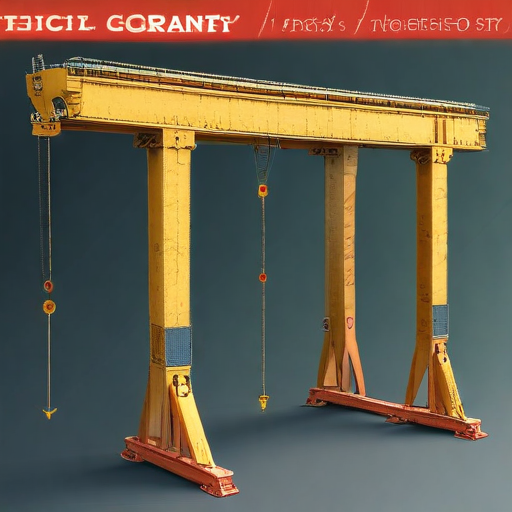
List Product features of “used gantry crane”
A used gantry crane can provide substantial value due to its affordability and functionality. Here are some key features to consider:
1. Load Capacity: Varying load capacities depending on the model, typically ranging from a few tons to several hundred tons.
2. Span and Height: Different span lengths and lifting heights, adaptable to various operational requirements.
3. Material and Build: Constructed with high-quality steel for durability and strength, even with previous use.
4. Mobility: Options include fixed, semi-mobile (on wheels), and fully mobile units (on tracks or rails).
5. Power Source: Available in electric, hydraulic, and manual options to suit different environments and energy resources.
6. Control Systems: Feature manual, wired remote, or wireless remote control systems for operational flexibility.
7. Versatility: Suitable for both indoor and outdoor use, across industries like manufacturing, construction, shipping, and warehousing.
8. Ease of Assembly: Typically modular designs that can be disassembled and reassembled for transport and different use cases.
9. Safety Features: Equipped with safety mechanisms such as overload protection, emergency stop buttons, and limit switches.
10. Maintenance Records: Documentation of previous maintenance and servicing, ensuring reliability and continued performance.
11. Customization Options: Potential for modifications and upgrades depending on specific requirements and conditions.
12. Inspection and Certification: Often comes with documentation of past inspections and compliance with industrial regulations.
Purchasing a used gantry crane can be a cost-effective solution while still providing robust functionality and versatility for various lifting needs.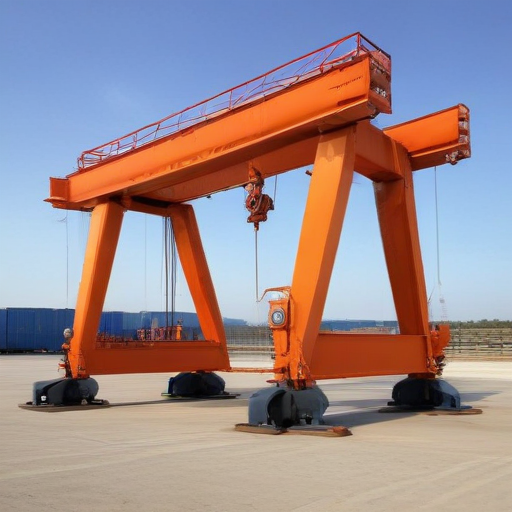
List Application of “used gantry crane”
Used gantry cranes are versatile lifting devices widely applied across various industries due to their robust construction and adaptability. Here are some notable applications:
1. Manufacturing and Assembly:
– *Heavy Component Handling*: These cranes are essential in moving heavy components within automotive, aerospace, and machinery manufacturing plants.
– *Production Line Support*: They aid in efficiently transferring materials and assembling parts on production lines.
2. Warehousing and Logistics:
– *Container Loading/Unloading*: Gantry cranes are pivotal in handling large shipping containers in logistics hubs and ports.
– *Inventory Management*: They assist in moving bulky goods within warehouses, enhancing operational efficiency.
3. Construction Sites:
– *Material Transport*: Used extensively for lifting and placing heavy construction materials like steel beams, girders, and concrete slabs.
– *Assembly of Structures*: Crucial in erecting large structures, ensuring timely and safe positioning of components.
4. Shipbuilding and Repair:
– *Hull Construction*: Essential in building and repairing ship hulls by lifting massive sections and components.
– *Equipment Installation*: Facilitate the placement of heavy equipment and engines into ships.
5. Railway Maintenance:
– *Track and Equipment Handling*: Utilized in the maintenance and installation of railway tracks and handling heavy railway equipment.
– *Locomotive Repair*: Assist in lifting locomotive parts for repair and maintenance purposes.
6. Mining Operations:
– *Handling Mining Equipment*: Used in transporting heavy mining machinery, such as excavators and crushers, within mining sites.
– *Mineral Processing*: Aid in moving raw materials and finished products in processing plants.
7. Power Generation:
– *Turbine Installation*: Critical in installing and maintaining turbines in power plants, including nuclear, hydroelectric, and wind energy facilities.
– *Transformer Handling*: Help in lifting and positioning heavy transformers and other electrical components.
In summary, used gantry cranes are invaluable in industries requiring heavy lifting and precise material handling, significantly improving efficiency, safety, and productivity across various applications.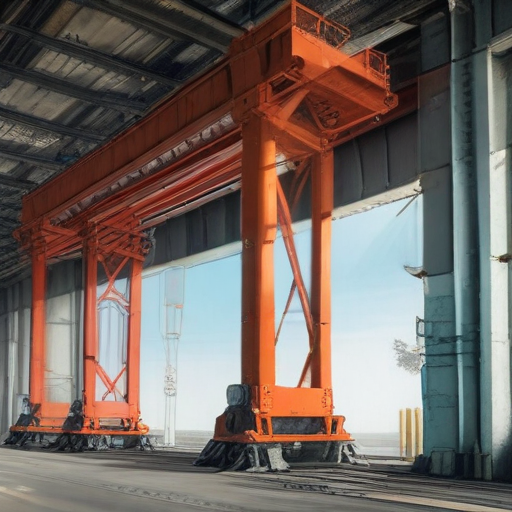
List Various Types of “used gantry crane”
There are several types of used gantry cranes available to suit different industrial needs. Here are some of the main types:
1. Single Girder Gantry Cranes: These cranes feature a single girder design which makes them lighter and more cost-effective. They are ideal for light to moderate lifting tasks in smaller spaces.
2. Double Girder Gantry Cranes: With two girders, these cranes can handle heavier loads and offer higher lifting capacity. They are suitable for more demanding industrial applications.
3. Portable Gantry Cranes: These are lightweight, moveable cranes that can be easily transported and set up. They are typically used for light lifting applications in workshops or repair facilities.
4. Full Gantry Cranes: These cranes run the length of a rail or track system and can cover large areas, making them suitable for heavy-duty lifting in shipyards, warehouses, and large manufacturing facilities.
5. Semi-Gantry Cranes: Featuring one leg that runs on the ground and another on a wall-mounted rail, these cranes save space and are often used in facilities where floor space is constrained.
6. Adjustable Gantry Cranes: These cranes offer adjustable height and span, providing flexibility for lifting tasks of varying dimensions. They are used in multiple settings, including construction and maintenance.
7. Heavy Duty Gantry Cranes: Designed for maximum lifting capacity, these cranes are built to handle exceptionally heavy loads and are commonly found in industries like shipping and steel manufacturing.
8. Container Gantry Cranes: Specifically designed for loading and unloading containers from ships, these cranes are essential in port operations.
9. Rubber Tyred Gantry (RTG) Cranes: Equipped with rubber tires, RTG cranes are mobile and can be used for container stacking in large yards.
When considering a used gantry crane, it’s important to evaluate the specific lifting requirements, space constraints, and budget to choose the most suitable type.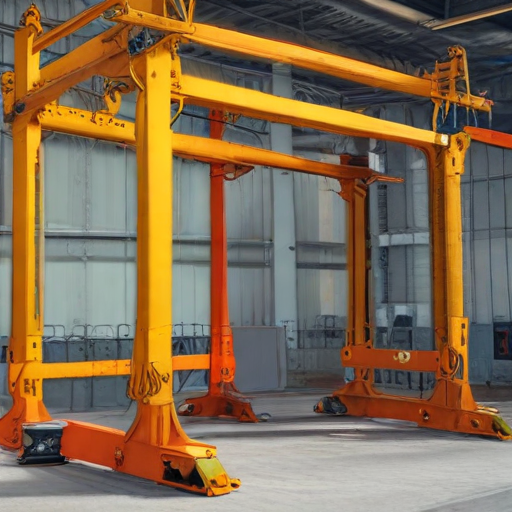
used gantry crane Accessories Upgrades and Custom Manufacturing Options
Gantry cranes are essential in various industries for material handling, and enhancing their functionality and efficiency often involves accessorizing, upgrading, and customizing. Below are some key upgrades and custom manufacturing options available for gantry cranes:
1. Trolley and Hoist Upgrades: Enhance load capacity and speed with advanced trolleys and hoists, such as electric wire rope hoists, chain hoists, or even motorized trolleys for better maneuverability.
2. Remote Controls: Implement radio remote controls or push-button pendant stations for safer and more convenient crane operation, enabling operators to control the crane from a distance.
3. Variable Frequency Drives (VFDs): Upgrade to VFDs for smoother acceleration and deceleration, reduced mechanical stress, and improved load control.
4. Anti-Sway Systems: Install anti-sway technology to minimize load swing, enhancing precision and safety during load handling operations.
5. Custom Fabrication: Opt for custom gantry crane designs tailored to specific project requirements, such as customized dimensions, increased lifting heights, or specialized beam configurations.
6. Height and Span Adjustability: Choose cranes with adjustable heights and spans for versatile applications across different workspaces and project demands.
7. Track Systems: Implement fixed or portable track systems to enhance the mobility and placement flexibility of the gantry crane.
8. Boom Extensions: Add boom extensions or telescopic booms to extend the reach of the crane, ideal for applications requiring variable span length.
9. Load Weighing Systems: Integrate advanced load weighing systems to monitor and ensure maximum load capacities are not exceeded, promoting safety and efficiency.
10. Safety Features: Enhance safety with features such as overload protection, emergency stop buttons, warning lights, audible alarms, and anti-collision systems.
Investing in these accessories, upgrades, and custom manufacturing options can significantly improve the performance, safety, and adaptability of gantry cranes, ensuring they meet the specific needs of any industrial application.
List Quality Control and The Manufacturing Process of “used gantry crane”
Quality Control and Manufacturing Process of Used Gantry Cranes
1. Initial Inspection and Assessment:
– Inspect structural integrity for cracks, rust, and physical wear.
– Evaluate mechanical components like motors, hoists, and trolleys for wear and operational efficiency.
– Confirm compliance with industry standards and regulations.
2. Disassembly:
– Carefully disassemble the gantry crane into controllable parts.
– Label and catalog each part for accountability.
– Inspect components individually for wear and damage.
3. Cleaning and Refurbishing:
– Clean each part to remove grime, rust, and old lubricants.
– Refurbish or replace worn-out components such as bearings, gears, and cables.
– Apply rust-proof coatings and repaint as needed.
4. Component Testing:
– Rigorous testing of electrical systems including wiring, control panels, and safety features like limit switches.
– Load test mechanical parts such as motors and hoists to ensure they meet specification.
– Ensure structural parts meet tolerance requirements.
5. Reassembly:
– Reassemble the crane, ensuring all bolts, fasteners, and joints are secured correctly.
– Reapply lubricants where necessary, and replace seals and gaskets.
6. Final Inspection:
– Perform a comprehensive final inspection covering structural, mechanical, and electrical aspects.
– Conduct operational tests under load to verify smooth operation and safety.
– Ensure alignment and balance are correct to prevent operational issues.
7. Certification and Documentation:
– Provide a detailed report highlighting refurbished parts and tests conducted.
– Include inspection and testing certifications to ensure the safety and reliability of the crane.
8. Delivery and Installation:
– Ensure safe transport to the site with proper handling to prevent damage.
– Supervise installation to guarantee correct assembly and operational setup.
– Offer post-installation support and final checks to confirm operational readiness.
This meticulous process ensures that used gantry cranes are restored to optimal working condition, guaranteeing safety, efficiency, and reliability for their new application.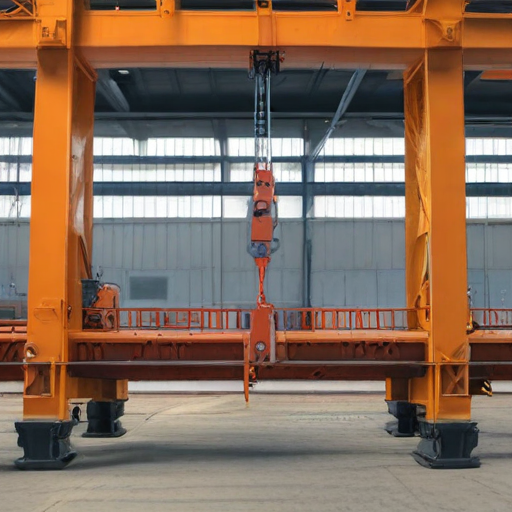
How to use “used gantry crane”
Operating a used gantry crane involves several careful steps to ensure safety and efficiency. Here’s a concise guide:
1. Inspection:
– Visual Check: Inspect the crane for any visible damage, corrosion, or wear.
– Mechanical Check: Ensure all moving parts are lubricated and functioning smoothly.
2. Worksite Preparation:
– Clear the Area: Remove unnecessary obstructions from the crane’s operating zone.
– Ground Clearance: Check the ground for stability and levelness.
3. Safety Measures:
– Training: Ensure the operator is trained and certified.
– Load Limit: Verify that the load does not exceed the crane’s maximum capacity.
– Safety Gear: Equip all personnel with appropriate safety gear (hard hats, gloves).
4. Setup:
– Positioning: Place the crane on a stable surface.
– Securing: Lock the crane wheels if it’s a mobile gantry to prevent movement.
5. Operation:
– Controls: Familiarize with the control panel and emergency stop button.
– Lifting: Gradually lift the load, maintaining a steady speed.
– Movement: Move the load by gently guiding the crane along its rails or wheels.
– Lowering: Carefully lower the load to the designated spot.
6. Maintenance:
– Post-use Inspection: Check for any issues that might have arisen during operation.
– Cleaning: Keep the crane clean to avoid buildup that may cause mechanical problems.
– Record Keeping: Document any maintenance performed and any issues encountered.
By adhering to these steps, you ensure that the used gantry crane operates safely and efficiently, extending its lifespan and maintaining workplace safety.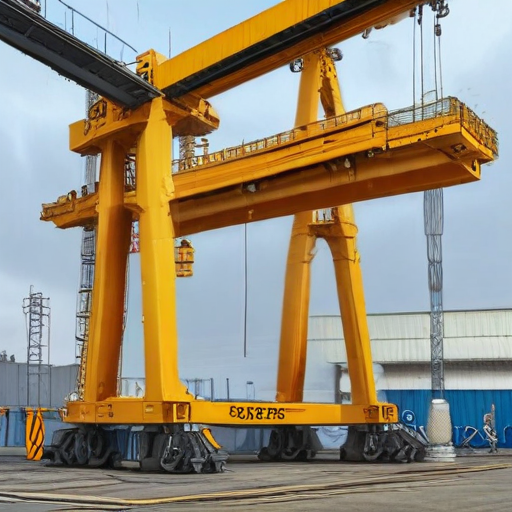
“used gantry crane” Comparative Analysis
Used gantry cranes present a cost-effective alternative to new cranes for lifting and moving heavy loads in various industrial environments. However, they also come with different pros and cons that must be carefully evaluated.
Cost Savings:
The most significant advantage of purchasing a used gantry crane is the reduced initial investment. Companies can often save significant amounts of money which can be redirected to other essential areas. Additionally, used equipment might also have lower insurance premiums.
Availability and Lead Time:
Used gantry cranes can often be available immediately, cutting down on the lead time significantly. This is advantageous for projects with tight deadlines, where waiting for a new crane could result in delays.
Depreciation:
New cranes depreciate quickly within the first few years. Opting for a used crane means that the steepest part of the depreciation curve has already occurred, providing better long-term value retention.
Inspection and Maintenance History:
However, the purchase of a used gantry crane requires thorough scrutiny. Factors such as wear and tear, prior maintenance records, and the crane’s operational history are crucial. A detailed inspection is imperative to ensure it meets safety and operational standards.
Technological Advancements:
Newer cranes come with the latest technological advancements, higher efficiency, and potentially better safety features. Used cranes may lack these modern improvements, which could impact productivity and safety.
Warranty and Support:
New gantry cranes come with manufacturer warranties and after-sales support, offering peace of mind concerning repairs and maintenance. Used cranes, in contrast, may not have these safeguards, potentially leading to higher unexpected costs.
Customization:
New cranes can be tailored to specific requirements. With used cranes, customization options are limited, and companies may have to compromise on certain specifications.
In conclusion, while used gantry cranes can offer significant savings and immediate availability, a detailed evaluation of their condition and suitability for the intended application is crucial. Comparing them against the benefits of new cranes, including advanced technology and warranties, will help businesses make an informed decision.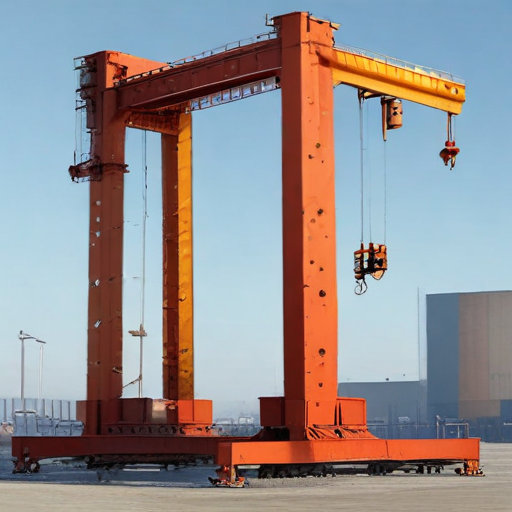
“used gantry crane” Warranty and Support
When purchasing a used gantry crane, understanding the warranty and support options available is crucial for ensuring equipment reliability and longevity. Generally, used gantry cranes may come with limited warranty coverage compared to new ones. It is essential to clarify the specifics with the supplier, such as the duration of the warranty and what components or types of damages are covered. Some suppliers might offer a short-term warranty that covers major components like the hoist, motor, and structural integrity for a few months or up to a year.
Support services are equally important when dealing with used equipment. Look for suppliers that provide comprehensive customer support including installation, routine maintenance, and troubleshooting services. Availability of technical support through phone, email, or on-site visit can be a significant advantage, especially if you encounter operational issues. Furthermore, ask whether the supplier offers spare parts or has a partnership with manufacturers to facilitate easy replacement of worn-out parts.
To safeguard your investment, it may also be beneficial to inquire about third-party inspection before finalizing the purchase. Independent assessments can provide an unbiased evaluation of the crane’s condition, highlighting any potential issues that could affect future performance.
In summary, ensure that you get detailed information on the warranty terms, understand the level of customer support offered, and consider independent inspection for reliable operation. Being proactive in these areas can help mitigate risks and assure that your used gantry crane serves its purpose effectively.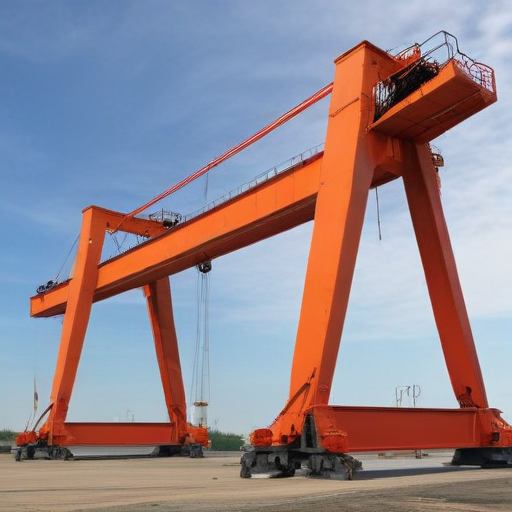
List “used gantry crane” FAQ
Used Gantry Crane FAQ
Q1: What is a gantry crane?
A gantry crane is a type of overhead lifting device built atop a gantry, a structure used to straddle an object or workspace. Gantry cranes are commonly used in various industries for lifting heavy loads and moving them horizontally.
Q2: Why should I consider buying a used gantry crane?
Buying a used gantry crane can be cost-effective, providing significant savings compared to purchasing a new one. They are often available immediately, saving lead time, and many used cranes are in excellent condition with a long remaining service life.
Q3: How do I determine the condition of a used gantry crane?
Inspect physical wear and tear, review maintenance records, and ensure the crane meets current safety standards. It’s also recommended to have a professional conduct a thorough inspection.
Q4: What weight capacities are available for used gantry cranes?
Used gantry cranes come in various capacities, ranging from a few tons to several hundred tons. Verify the specific capacity and ensure it meets your operational requirements.
Q5: Is customization possible with used gantry cranes?
Yes, many used gantry cranes can be refurbished or modified to better fit your specific needs. This can include adjustments in height, span, and lifting capacity.
Q6: How does the cost of a used gantry crane compare to a new one?
A used gantry crane can cost 30-50% less than a new crane, depending on age, condition, and specifications.
Q7: Can I get a warranty for a used gantry crane?
Some dealers offer warranties for used gantry cranes, but this varies. It’s advisable to discuss warranty options and understand what is covered.
Q8: What maintenance is required for used gantry cranes?
Regular maintenance involves inspecting mechanical parts, lubricating moving components, and checking electrical systems. Adhering to a preventive maintenance schedule ensures operational safety and prolongs the lifespan.
Q9: Where can I purchase a used gantry crane?
Used gantry cranes can be purchased from specialized dealers, online marketplaces, industrial auctions, and sometimes directly from large businesses upgrading their equipment.
This FAQ aims to provide concise and comprehensive information to guide your decision-making process when considering a used gantry crane.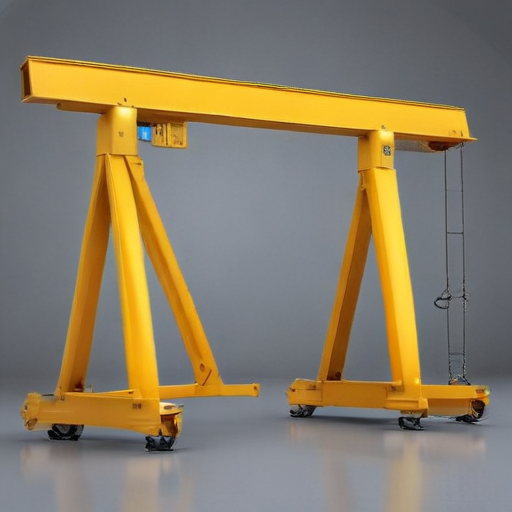
Top 10 FAQ with answer about used gantry crane for Buyer Sourcing from China
Certainly! Here are the top 10 frequently asked questions (FAQs) about sourcing used gantry cranes from China, along with concise answers:
1. What should I look for when buying a used gantry crane?
– Inspect the crane’s structural integrity, operational history, lifting capacity, and any signs of wear or damage. Verify maintenance records and compliance with safety standards.
2. How can I ensure the quality of a used gantry crane from China?
– Purchase from reputable suppliers with positive reviews. Request detailed photos, videos of operation, and third-party inspection reports. Consider visiting the site if feasible.
3. Are there specific regulations for importing used gantry cranes?
– Yes, regulations vary by country. Ensure the crane meets your local safety and operational standards. Check with customs authorities and import regulations in your country before purchasing.
4. What is the typical lifespan of a gantry crane?
– A well-maintained gantry crane can last 20-30 years. The lifespan depends on the usage intensity, maintenance practices, and environmental conditions.
5. How do I arrange for shipping and customs clearance?
– Coordinate with the supplier and a reputable freight forwarder. The supplier may assist with documentation and shipping. Understand import duties and taxes applicable in your country.
6. What are the common costs involved in sourcing a used gantry crane from China?
– Costs include the crane price, shipping, insurance, customs duties, and possible retrofitting or inspection fees. Budget for installation and safety certification at your site.
7. Can I get a warranty on a used gantry crane?
– Warranties on used cranes are rare but possible. Negotiate with the supplier for any available warranty or guarantee. Thoroughly understand the terms and conditions.
8. What kind of after-sales support should I expect?
– Reputable suppliers offer parts support and technical assistance. Clarify the after-sales service levels and availability of spare parts before purchase.
9. How can I verify the reliability of the seller?
– Check the supplier’s credentials, customer testimonials, and trade references. Use platforms like Alibaba, Global Sources, or trade shows to find verified suppliers.
10. What payment methods are secure for purchasing from China?
– Use secure payment methods like Letter of Credit (L/C), PayPal, or escrow services. Avoid full upfront payments; opt for staggered payments linked to delivery milestones.
These FAQs and answers should help you navigate the process of purchasing a used gantry crane from China efficiently and safely.

